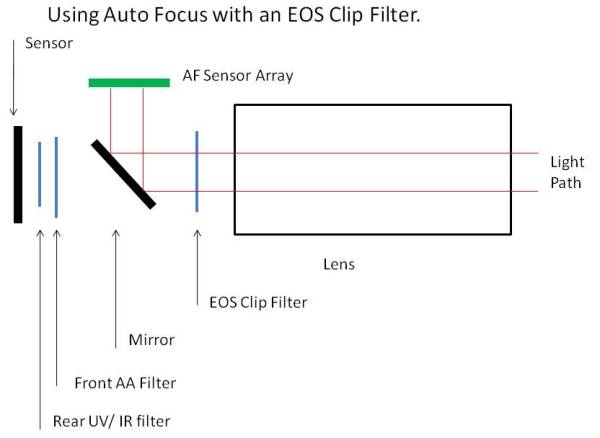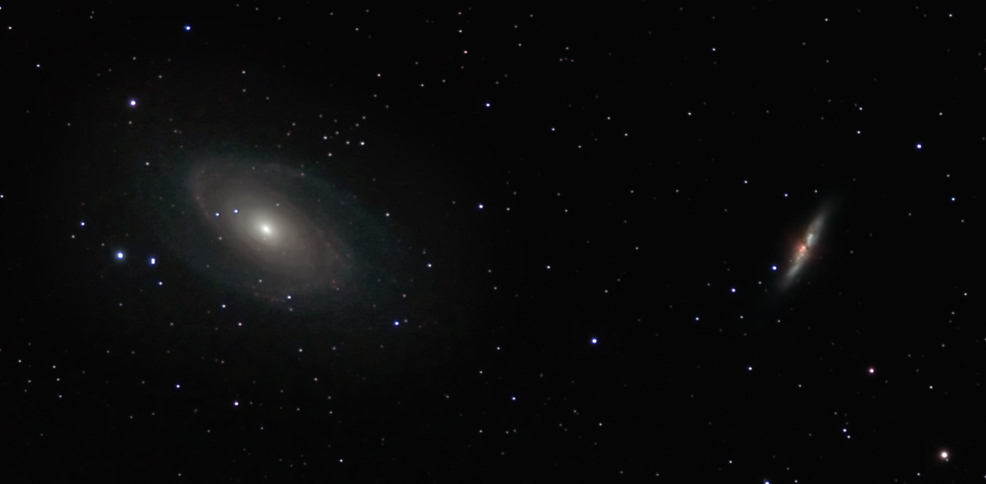Recently, a myth has grown up around the use of EOS clip filters with modified dSLR cameras. The myth says that as the thickness of an EOS clip filter is very similar to that of the rear filter in a two filter dSLR (400D, 450D, 500D, 1000D, 40D, 50D) that autofocus accuracy is retained by simply removing the rear of the two filters and then using a clip filter. This article explains in brief why this isn't the case.
A little about the workings of Auto-Focus
The below diagram shows the light path in a dSLR during auto focus

The auto focus is achieved by two crossed lines of pixels in the top of the camera which the light is reflected on to by the mirror. Anything in the optical path at this point is compensated for - i.e., using a filter behind the lens will not effect the operation of the auto focus.
This means that the presence of the eos clip filter is compensated for by the auto focus which remains sharp and accurate. When the mirror is raised, if both sensor filters are still in place, focus will still be accurate. If you then remove the rear of the two filters the focus is still effected - the removal of 0.8mm of glass still impacts on the focus of the resultant image in *exactly the same way* as it would whether the clip filter is there or not, as the clip filter has been compensated for by the auto focus.
The best way to ensure a tight focus in a modified camera is to accurately reposition the sensor.
Andy Ellis 15 February 2010.

|





